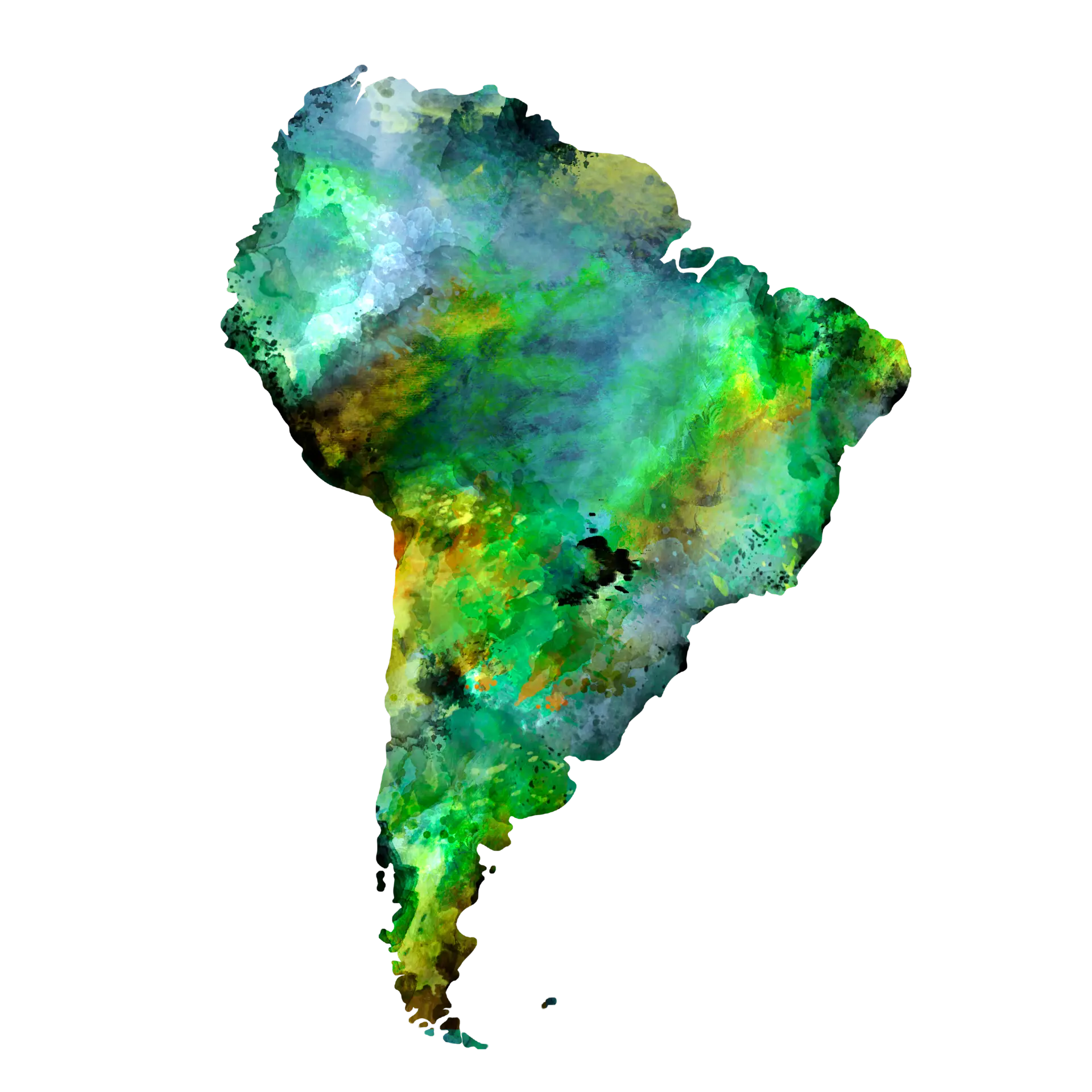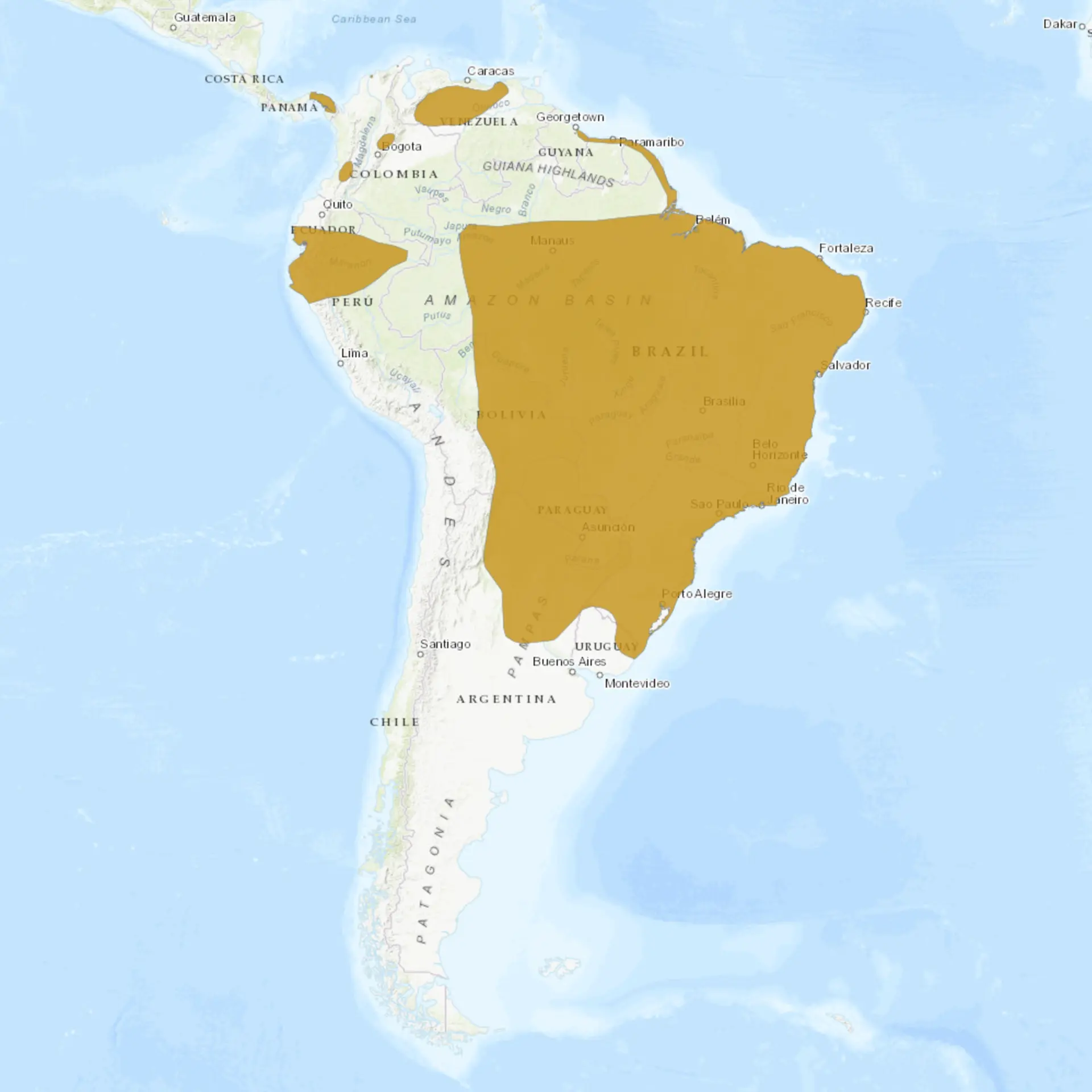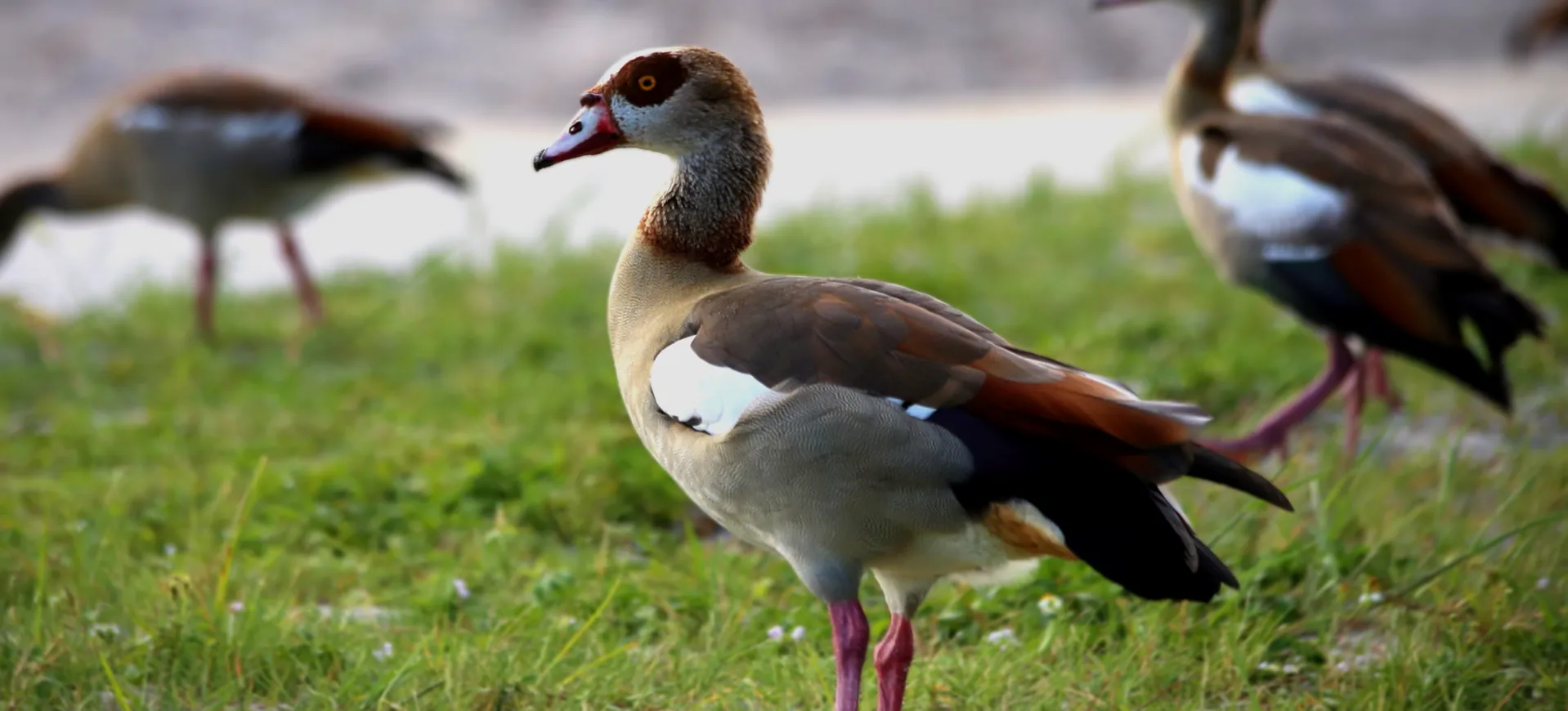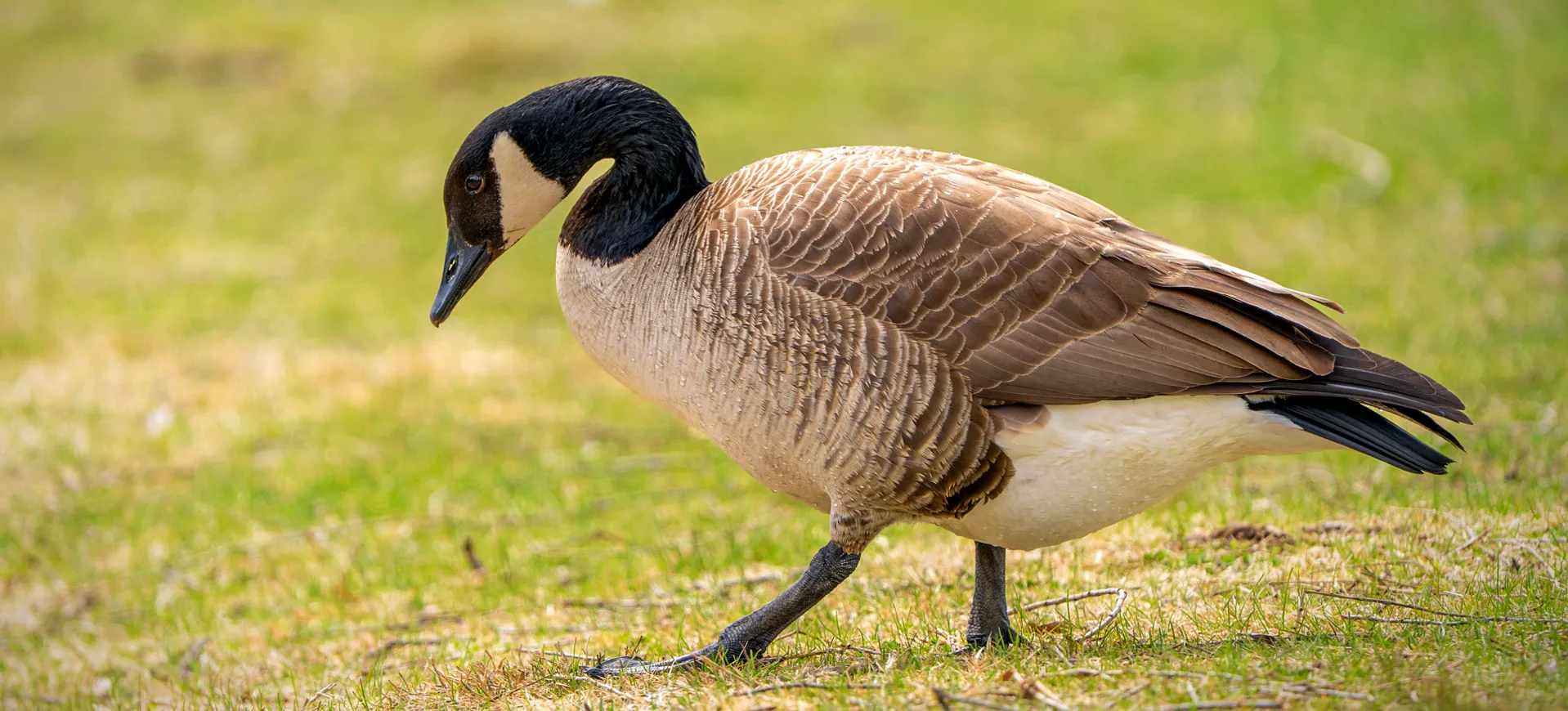Overview
The American Comb Duck, also known as the Knob-billed Duck, is a fascinating and unique species of waterfowl. Known for its distinctive comb or knob at the base of its bill, this duck is predominantly found in the tropical wetlands of America. It belongs to the Anatidae family, including ducks, geese, and swans, and has a wide geographical distribution worldwide.
It is a medium-to-large duck characterized by a significant size difference between males and females. The males are often noticeably more prominent and more colorful than the females, featuring larger combs on their bills. Despite their striking appearance, American Comb Ducks are known to be quite shy and elusive, typically choosing to inhabit areas with dense vegetation where they can hide from potential threats.
The American Comb Duck plays a significant role in its ecosystem by contributing to plant distribution through seed dispersal, and it also provides a food source for various predators. It’s an adaptable bird that can thrive in various environments, but habitat loss, hunting, and environmental changes pose significant threats to its population.
Taxonomy
Kingdom
Phylum
Class
Order
Family
Genus
Species
Type
Current distribution:
The American comb duck is found in scattered populations throughout Central and South America, extending from Panama and Colombia to Argentina and Uruguay. It is particularly common in wetland-rich regions such as the Pantanal in Brazil and the Orinoco River Basin in Venezuela. The species is generally non-migratory, though it may make localized movements in response to seasonal changes in water availability. During the rainy season, populations expand into temporary wetlands, while the dry season forces them to retreat to permanent water bodies.
Although its range is widespread, the American comb duck is uncommon in many areas, often inhabiting remote or inaccessible wetlands. Human activity, including agriculture and wetland drainage, has caused localized declines in some regions. However, the species remains stable in much of its range, particularly in areas with extensive wetland systems. Conservation efforts focused on preserving wetlands and managing water resources are critical for ensuring its continued presence in the wild.
Physical Description:
The American Comb Duck is an impressive bird, noted for its distinct comb or knob at the base of the bill, especially prominent in males. This duck has a stout body, a long neck, and a large head. Males generally have glossy black-green plumage with white underparts and blue and green-tinged wings. They also have a red or pink comb, which enlarges during the breeding season. Females, on the other hand, are predominantly grey-brown and have much smaller combs.
Males are substantially larger than females, making this species sexually dimorphic. Both sexes’ plumage is somewhat drab compared to other waterfowl, which aids in camouflage within their often muddy and vegetative habitats. Juvenile ducks resemble adult females but with a duller overall coloration. The comb duck’s bill is somewhat broad and rounded, making it ideal for dabbling and filter feeding.

Lifespan: Wild: ~12 Years || Captivity: ~15 Years

Weight: Male: 3.3-5.3 lbs (1.5-2.4 kg) || Female: 2.2-3.3 lbs (1-1.5 kg)

Length: Male: 22-27 in (56-69 cm) || Female: 18-22 in (45-56 cm)

Wingspan: Male & Female: 36-40 in (91-102 cm)

Top Speed: 40 mph (64 km/h)
Characteristic:
Native Habitat:
The American Comb Duck is native to the tropical regions of America and is found in wetland habitats. They prefer shallow freshwater lakes, swamps, floodplains, and marshes with plenty of floating and emergent vegetation. Dense vegetation provides these ducks with cover from predators and a rich food source.
The ducks are generally sedentary but are known to move in response to changes in water availability, such as during droughts or periods of flooding. Although they can adapt to various habitats, they thrive best in wetlands with slow-moving or stagnant water bodies. They are known to nest on the ground among tall grasses or in tree holes, which provide protection and concealment for their eggs and chicks.
Biomes:
Biogeographical Realms:
Continents:
Diet:
Diet & Feeding Habits:
The diet of the American Comb Duck is varied and opportunistic, feeding on a wide range of food items. Their food primarily includes aquatic plants, seeds, and grains, but they also consume small fish, amphibians, insects, and mollusks when available. They forage in shallow water, using their broad bills to dabble and upend in typical duck fashion.
American Comb Ducks are most active at night when they forage for food, making them nocturnal feeders. During the day, they prefer to rest and stay hidden among dense vegetation. These ducks often gather in small groups when feeding, but it’s not uncommon to see them foraging alone. Seasonal and regional changes may affect the duck’s diet, and they are known to adapt their feeding habits based on food availability and nutritional needs.
Mating Behavior:
Mating Description:
American Comb Ducks have a complex mating system characterized by high competition among males. This is due to the males’ more prominent size and enlarged combs on their bills, which are particularly prominent during the breeding season and play a crucial role in attracting females. The mating season generally aligns with the wet season, ensuring ample food and suitable nesting conditions for the offspring.
Females lay clutches of 7-15 eggs and incubate them for about 28-30 days. Both parents participate in caring for the hatchlings, although the female tends to invest more time in brooding and rearing the young. The chicks are precocial, meaning they are relatively mature and mobile from the moment of hatching, which helps them evade predators and survive in the harsh wilderness.
Reproduction Season:
Birth Type:
Pregnancy Duration:
Female Name:
Male Name:
Baby Name:
Social Structure Description:
The American comb duck is generally sociable. During the non-breeding season, it forms small flocks and occasionally joins mixed-species groups. These flocks often congregate in wetland areas with abundant food and shelter, providing safety in numbers from predators. During the breeding season, however, males become highly territorial and aggressive, defending their mates and nesting sites from rivals. Outside breeding, the species displays relatively peaceful social interactions, with minimal conflict within flocks.
Communication between individuals includes a variety of vocalizations and visual displays, such as head movements and wing flapping. Ducklings remain with their mother for several weeks after hatching, forming a close family unit until they become independent. Despite their social nature during certain times of the year, American comb ducks are not migratory and tend to remain within localized wetland systems. Their flexible social behavior allows them to adapt to varying environmental conditions and food availability.
Groups:
Conservation Status:
Population Trend:
The IUCN lists the American comb duck as “Least Concern,” as it remains widespread across its range and is not currently facing major population declines. Its ability to adapt to various wetland habitats, including man-made environments like rice paddies, has helped it maintain stable numbers in many areas. However, localized declines have been reported in regions where wetlands have been drained for agriculture or urban development. Pollution and hunting also threaten some areas, particularly regions with limited conservation enforcement.
Conservation efforts aimed at protecting wetlands are crucial for ensuring the long-term survival of this species. While it is not currently threatened, ongoing habitat loss and climate change could significantly impact future population growth. Monitoring population trends and managing wetland resources will be essential for maintaining healthy numbers. The species’ reliance on seasonal wetlands underscores the importance of preserving these dynamic ecosystems.
Population Threats:
The primary threats to the American comb duck include habitat loss due to wetland drainage, agricultural expansion, and urbanization. These activities reduce the availability of suitable nesting and foraging sites, particularly in regions where wetlands are poorly protected. Pollution from agricultural runoff and industrial waste can degrade water quality, affecting the ducks and their food sources. Hunting pressure, particularly in areas where the species is viewed as a pest to rice crops, also poses a localized threat.
Climate change may further exacerbate these challenges by altering wetland ecosystems and reducing the availability of seasonal water bodies. Prolonged droughts and shifts in rainfall patterns could limit breeding opportunities and force populations to compete for dwindling resources. Predation by birds of prey, snakes, and mammals is another natural threat, particularly for eggs and ducklings. Effective conservation strategies, including habitat restoration and the enforcement of hunting regulations, are needed to address these threats.
Conservation Efforts:
Conservation efforts for the American comb duck focus primarily on preserving and managing wetland habitats. Protected areas such as national parks and wildlife reserves provide this species with critical nesting and foraging sites. International agreements and wetland conservation initiatives, such as the Ramsar Convention, play a key role in safeguarding the ecosystems on which this duck depends. Public education campaigns to reduce hunting and promote sustainable agriculture help mitigate human-wildlife conflicts in areas where the species is seen as a pest.
Research into the ecology and behavior of the American comb duck is essential for informing conservation strategies and identifying priority areas for protection. Community-based conservation programs involving local stakeholders in wetland management have successfully promoted coexistence with this species. In agricultural areas, strategies such as creating buffer zones around rice paddies can reduce conflicts and provide alternative habitats for the ducks. Ongoing monitoring of populations and habitats will be vital for ensuring the species’ long-term survival.
Additional Resources:
Fun Facts
- The American Comb Duck gets its name from the comb or knob-like structure at the base of its bill.
- Males are noticeably more prominent and colorful than females, a phenomenon known as sexual dimorphism.
- This species is one of the few ducks that nest both on the ground and in tree cavities.
- The comb on the male’s bill enlarges during the breeding season, which helps them attract females.
- American Comb Ducks are nocturnal feeders, meaning they are most active and feed primarily at night.
- The chicks of American Comb Ducks are precocial, meaning they are relatively mature and mobile from the moment of hatching.
- Despite being a waterfowl, the American Comb Duck often nests far from water, in tall grass or tree holes.
- Their large, rounded bill is perfect for dabbling and filter feeding in shallow water.
- The species is adaptable and can thrive in various environments, from natural wetlands to human-made reservoirs.
- They play an essential ecological role in their habitats, contributing to seed dispersal and providing food for various predators.





















































































